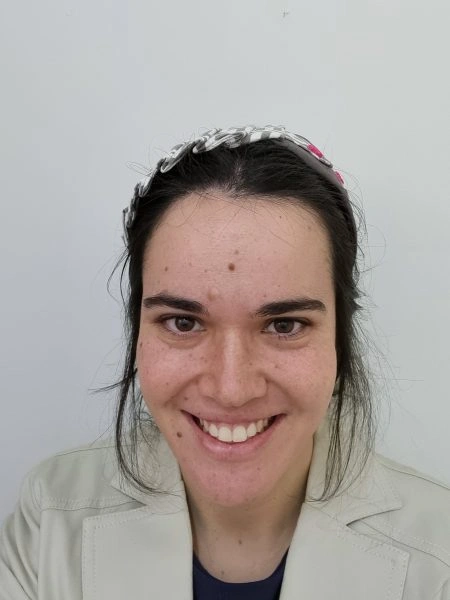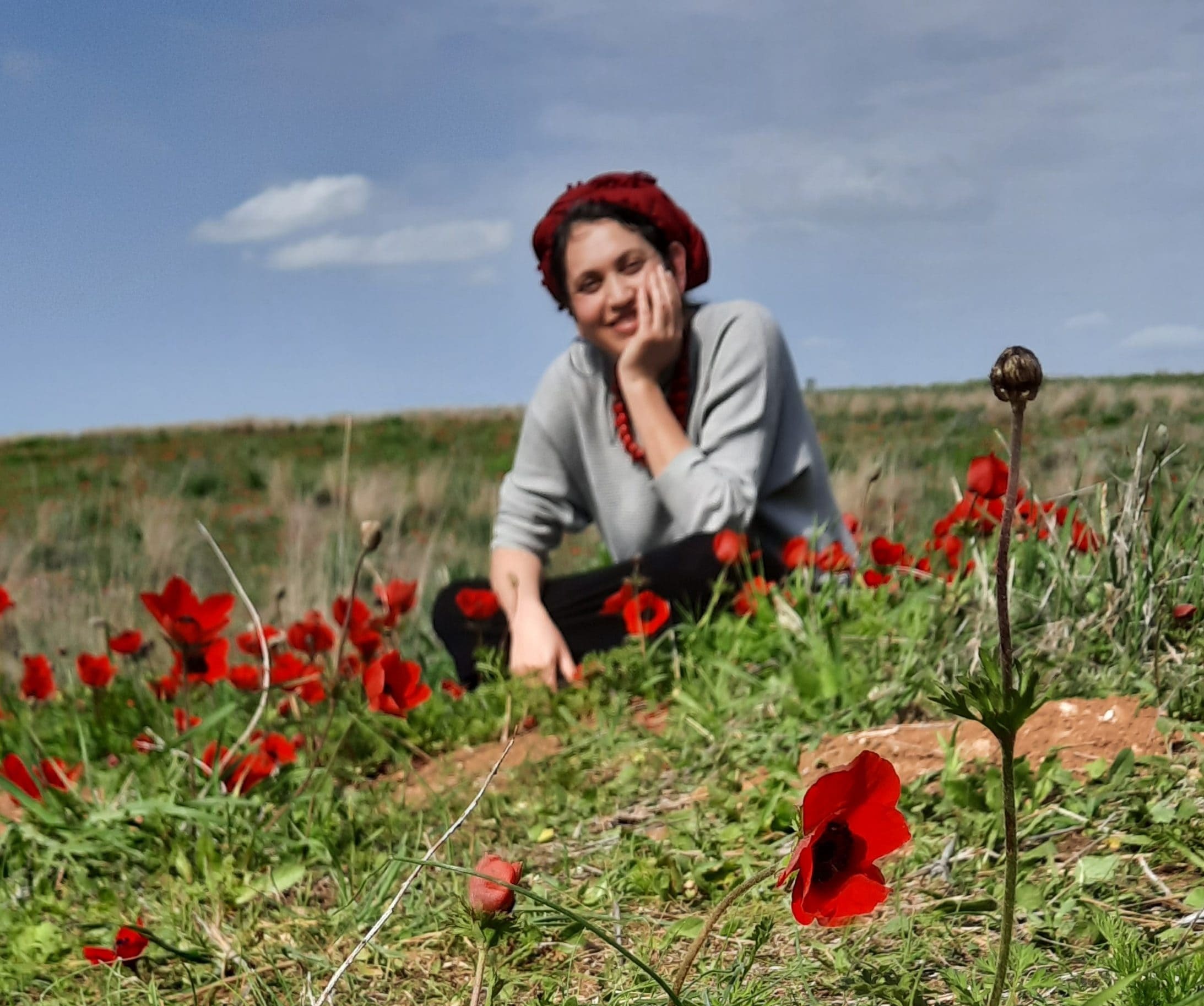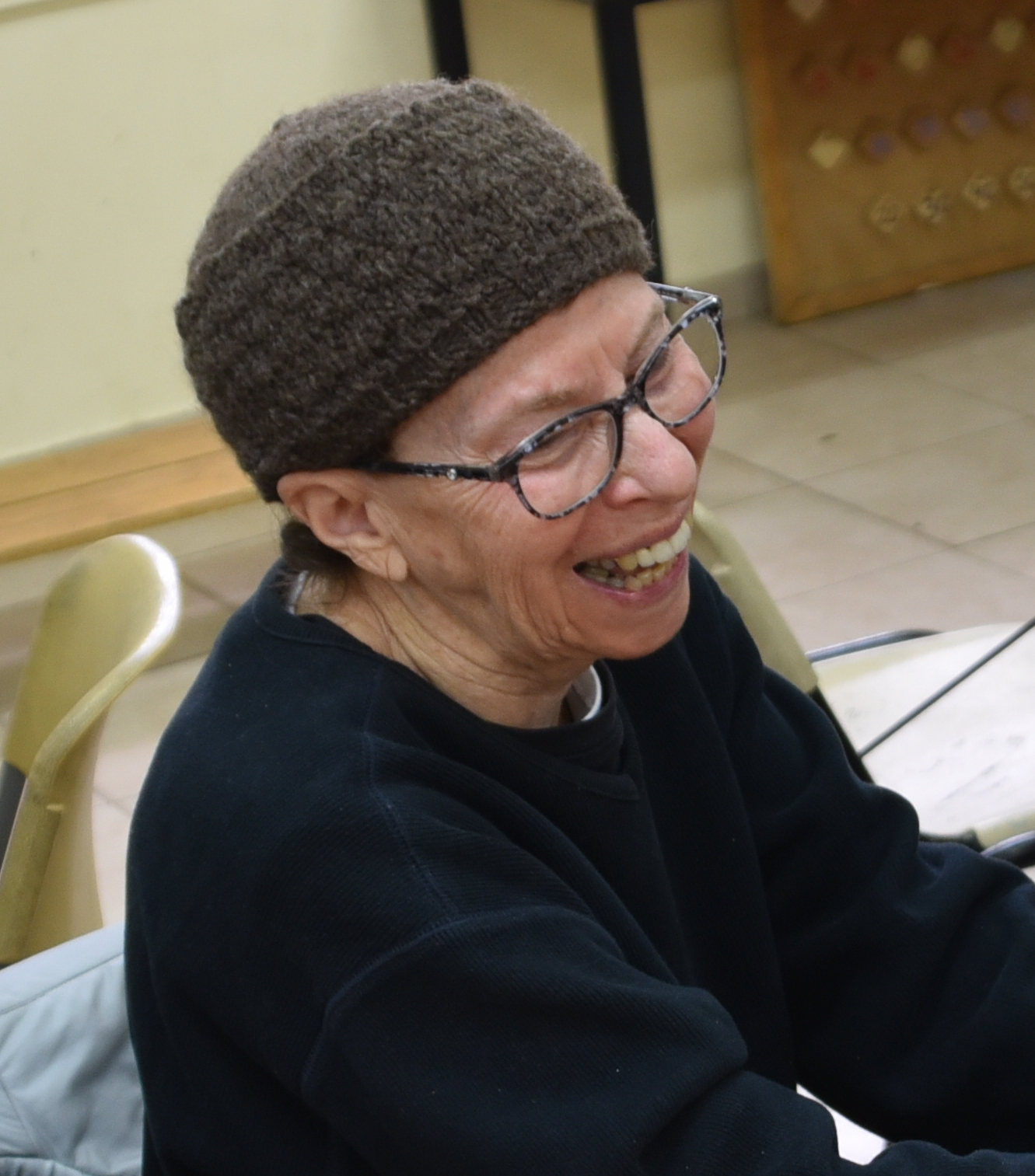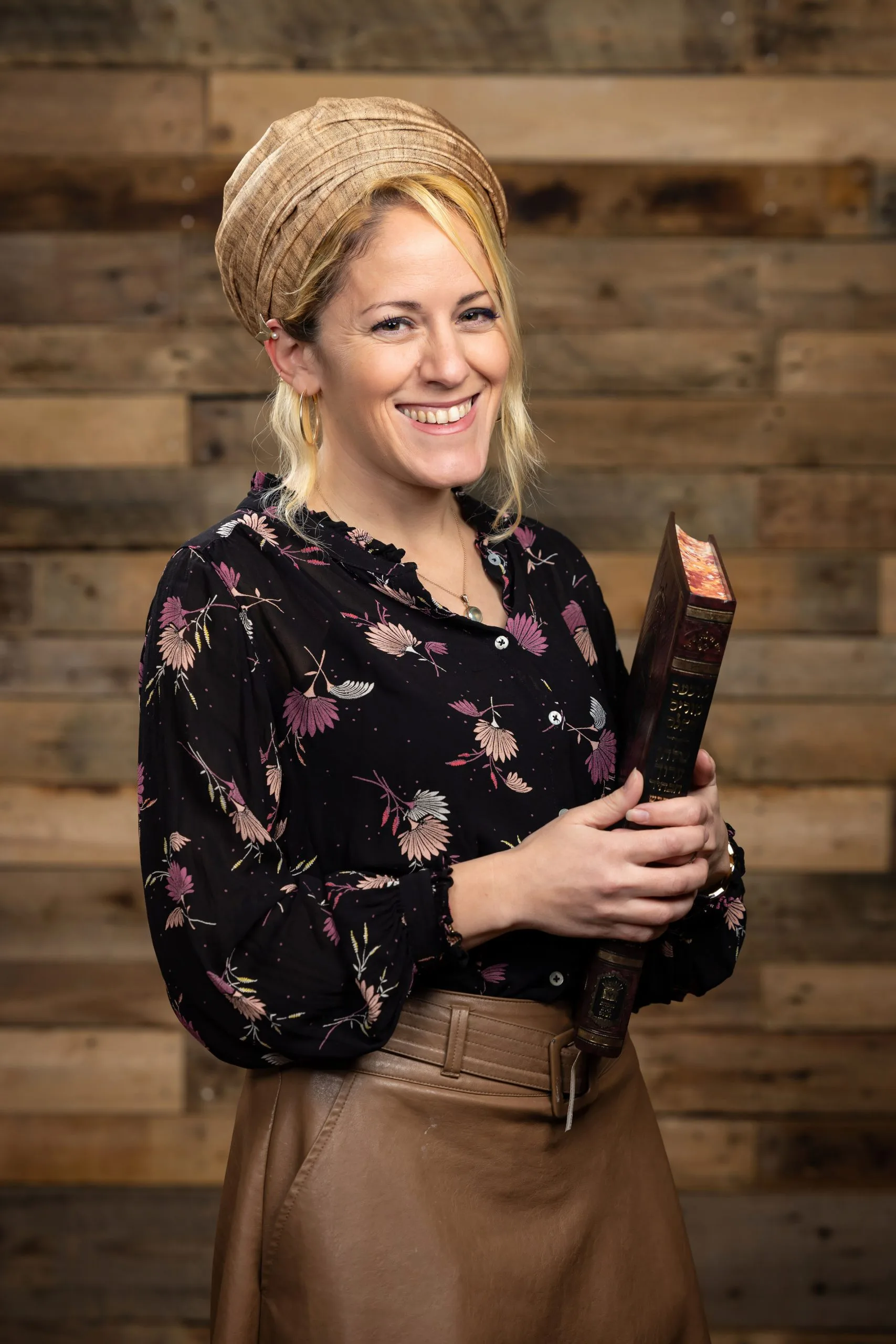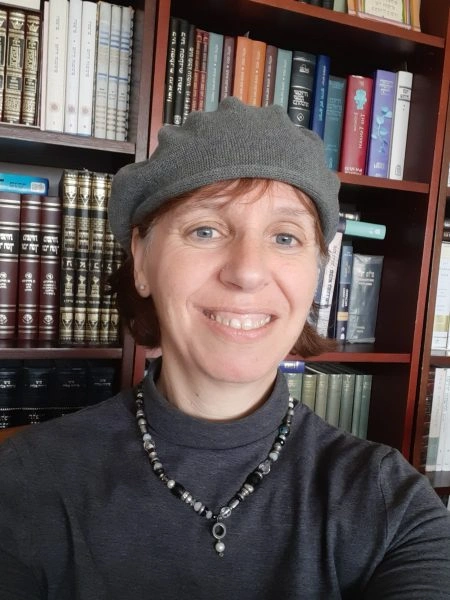מסכת זבחים
מסכת זבחים מוקדש ע”י אסתר קרמר לע”נ אביה מני גרוס.
רוצה להקדיש שיעור?

תקציר
בחלקי קרבנות שהתערבבו, כולל מבעל־חיים בעל מום, רבי אליעזר פוסק שאם אחד מהם הוקרב – אנו “מניחים” שהמוקרב היה בעל המום, וכל השאר מותרים. הגמרא מסבירה שרבי אליעזר מתבסס על דעת יחיד, דעת חנן המצרי, הסובר שבעלי חיים לאחר שחיטה אינם נחשבים “נדחים.”
באופן דומה, רב נחמן מביא פסיקה של רב: אם טבעת אחת של עבודה זרה נתערבה עם טבעות רבות אחרות, ואם אחת נפלה לים, כל השאר מותרים. לאחר שרבא הקשה על כך מן המשנה, שכל הבהמות נידונות למיתה, מדוע לא נתיר אותן לאחר שהראשונה מתה? מסיקה הגמרא שרב סובר כרבי אליעזר. נקבע אפוא ששניהם, רבי אליעזר ורב, מתירים את האחרות רק אם הן מוקרבות/נמכרות בזוגות, שכן ודאי אחת מן הזוג מותרת.
רב פסק גם במקרה שבו היו מאה טבעות ואחת מהן של עבודה זרה. אם חילקו אותן לשישים וארבעים, ולאחר מכן אחת מכל קבוצה נתערבה בסטים נפרדים של טבעות – זו שבאה מן הארבעים מותרת על סמך ספק ספיקא: ספק אם הייתה בשישים, ואף אם הייתה בארבעים – ספק אם נשארה בארבעים המקוריים.
שמואל חלק ולא התיר ספק ספיקא בעבודה זרה. מקשים על עמדתו מברייתא שמתירה זאת, אך נקבע שיש כאן מחלוקת תנאים.
ריש לקיש מביא פסיקה דומה לזו של רב נחמן לגבי חבית יין של תרומה. הגמרא מסבירה מדוע נצרכו שתי הפסיקות בנפרד, שכן לא ניתן היה להסיק אחת מן השנייה. רבה ורב יוסף נחלקו עד כמה מגיעה היתרו של ריש לקיש.
רבי אלעזר פוסק לקולא במקרה של חבית תרומה, אך מתקנים פסיקתו לאחר שרב נחמן מקשה עליה. רבי אושעיא דן במקרה דומה ומוסיף עניין נוסף.
המשנה דנה במצב שבו טריפה נתערבה עם בעלי חיים אחרים. מאחר שטריפה אמורה להיות ניכרת, שואלת הגמרא כיצד ייתכן מצב כזה של תערובת. מובאות שלוש תשובות אפשריות.
אם קרבנות מאותו סוג נתערבו, המשנה פוסקת שהם מוקרבים “למי שהם שייכים.” אולם בקרבנות שבהם נדרשת סמיכה, כיצד ניתן להקריב – הרי אי אפשר לסמוך על קרבן של אחר? רב יוסף מסביר שהמשנה מתייחסת לנשים שאינן חייבות בסמיכה.
כלים
מסכת זבחים
מסכת זבחים מוקדש ע”י אסתר קרמר לע”נ אביה מני גרוס.
הדף היום מוקדש ע”י שירה דישון לע”נ בנה, איתן דישון ז”ל. "תודה לבני בכורי סמ”ר איתן דישון, שבזכותו נפגשתי עם משפחת הדרן ואני ממשיכה בלימוד הדף היומי כבר שנה שנייה מאז נפילתו בגבורה בעזה. מאז שהוא "הותר לפרסום” הוא גם "הותר לבישום” ומבשם רבים להמשיך ללמוד להתחבר עם נצח ישראל.”
הדף היום מוקדש ע”י ג’ודי שפירא לע”נ אביה אלברט טייכמן
כלים
העמקה
רוצה להבין מה באמת קורה מתחת לפני השטח של הסוגיה?
שיעורים, פודקאסטים והרחבות של מיטב המורות שלנו יפתחו לך עוד זוויות וכיווני חשיבה.
חדשה בלימוד הגמרא?
זה הדף הראשון שלך? איזו התרגשות עצומה! יש לנו בדיוק את התכנים והכלים שיעזרו לך לעשות את הצעדים הראשונים ללמידה בקצב וברמה שלך, כך תוכלי להרגיש בנוח גם בתוך הסוגיות המורכבות ומאתגרות.
פסיפס הלומדות שלנו
גלי את קהילת הלומדות שלנו, מגוון נשים, רקעים וסיפורים. כולן חלק מתנועה ומסע מרגש ועוצמתי.
זבחים עד
וּתְנַן, רַבִּי אֱלִיעֶזֶר אוֹמֵר: אִם קָרַב הָרֹאשׁ שֶׁל אֶחָד מֵהֶן – יִקְרְבוּ כָּל הָרָאשִׁים!
And we learned in a mishna (77b) that in a case where sacrificial portions from unblemished burnt offerings became mixed with sacrificial portions from blemished burnt offerings, which are disqualified, Rabbi Eliezer says: If the head of one of them was sacrificed on the altar before they knew of the blemish, all the heads should be sacrificed, as it is assumed that the head of the disqualified animal was the one already sacrificed on the altar. This indicates that even with regard to slaughtered animals, if they were rejected from the altar due to being in a mixture, they are not permanently rejected, but are fit after the fact.
הוּא דְּאָמַר – כְּחָנָן הַמִּצְרִי; דְּתַנְיָא, חָנָן הַמִּצְרִי אוֹמֵר: אֲפִילּוּ דָּם בְּכוֹס – מֵבִיא חֲבֵירוֹ וּמְזַוֵּוג לוֹ.
The Gemara explains that this mishna affords no proof, as Rabbi Eliezer states his ruling in accordance with the opinion of Ḥanan the Egyptian, who maintains that even slaughtered animals are not permanently rejected. As it is taught in a baraita that Ḥanan the Egyptian says, with regard to the two goats of Yom Kippur, the one sacrificed to God and the scapegoat designated to be sent to Azazel: Even if the blood of the sacrificed goat is already in the cup where it was collected and the scapegoat dies, the sacrificed goat is still a fit offering, and the priest brings another goat and joins it to this slaughtered goat to serve as the scapegoat. By contrast, the other tanna’im, who maintain that slaughtered animals are rejected, hold that once they have become rejected due to being in a mixture they are no longer fit for sacrifice, as stated by Rava.
אָמַר רַב נַחְמָן אָמַר רַבָּה בַּר אֲבוּהּ אָמַר רַב: טַבַּעַת שֶׁל עֲבוֹדָה זָרָה שֶׁנִּתְעָרְבָה בְּמֵאָה טַבָּעוֹת, וְנָפְלָה אַחַת מֵהֶם לַיָּם הַגָּדוֹל – הוּתְּרוּ כּוּלָּן; דְּאָמְרִינַן: הָךְ דִּנְפַל הַיְינוּ דְּאִיסּוּרָא.
§ Concerning a similar case, Rav Naḥman says that Rava bar Avuh says that Rav says: With regard to a ring used in idol worship, from which it is prohibited to derive benefit and which is not nullified even in a ratio of one in one hundred, that was intermingled with one hundred permitted rings, and subsequently one of them fell into the Great Sea [Yam HaGadol], they are all permitted. The reason is that we say: That ring that fell into the Great Sea is the prohibited ring.
אֵיתִיבֵיהּ רָבָא לְרַב נַחְמָן: אֲפִילּוּ אַחַת בְּרִיבּוֹא – יָמוּתוּ כּוּלָּן. אַמַּאי? נֵימָא: דְּמִית – אִיסּוּרָא מִית!
Rava raised an objection to Rav Naḥman from the mishna: With regard to all the offerings that were intermingled with animals from which deriving benefit is prohibited, even if the ratio is one in ten thousand, they all must die. According to the opinion of Rav, that we say the one that was lost is the prohibited item, why must they all die? Let us say, with regard to the first animal that died, that the prohibited animal died, and the rest should be permitted.
אֲמַר לֵיהּ: רַב דְּאָמַר – כְּרַבִּי אֱלִיעֶזֶר; דִּתְנַן, רַבִּי אֱלִיעֶזֶר אוֹמֵר: אִם קָרַב הָרֹאשׁ שֶׁל אֶחָד מֵהֶן – יִקְרְבוּ כָּל הָרָאשִׁים כּוּלָּן.
Rav Naḥman said to Rava: Rav states his ruling in accordance with the opinion of Rabbi Eliezer, as we learned in the mishna that Rabbi Eliezer says: If the head of one of them is sacrificed on the altar before the priests knew of the blemish, all the heads should be sacrificed, as it is assumed that the head of the disqualified animal was the one already sacrificed on the altar.
וְהָא אָמַר רַבִּי אֶלְעָזָר: לֹא הִתִּיר רַבִּי אֱלִיעֶזֶר אֶלָּא שְׁנַיִם שְׁנַיִם, אֲבָל אֶחָד אֶחָד – לָא! אֲמַר לֵיהּ: אֲנָא תַּרְתֵּי קָאָמֵינָא.
Rava asked Rav Naḥman: But doesn’t Rabbi Elazar say: Rabbi Eliezer permitted the sacrifice of all the heads only if they were sacrificed two by two, as at least one of them is certainly permitted; but he did not permit them to be sacrificed one by one, in case the priest sacrifices the prohibited head by itself? How, then, can Rav Naḥman permit the rings without qualification? Rav Naḥman said to Rava: I too am saying that Rav permits the rings only if they are sold two at a time, in which case one of them is certainly not from idol worship.
אָמַר רַב: טַבַּעַת שֶׁל עֲבוֹדָה זָרָה שֶׁנִּתְעָרְבָה בְּמֵאָה טַבָּעוֹת, וּפֵרְשׁוּ אַרְבָּעִים לְמָקוֹם אֶחָד וְשִׁשִּׁים לְמָקוֹם אַחֵר; פֵּרְשָׁה אַחַת מֵאַרְבָּעִים – אֵינָהּ אוֹסֶרֶת, אַחַת מִשִּׁשִּׁים – אוֹסֶרֶת.
The Gemara discusses a similar case. Rav says: With regard to a ring used in idol worship that was intermingled with one hundred permitted rings, and then forty of them became separated to one place, and the other sixty became separated to another place, so that they are now two distinct groups of rings, if one ring from the group of forty became separated from them and then became intermingled with other rings, it does not render them prohibited. But if one ring from the other sixty became separated from its group and became mixed with other rings, it renders them prohibited.
מַאי שְׁנָא אַחַת מֵאַרְבָּעִים דְּלָא – דְּאָמְרִינַן אִיסּוּרָא בְּרוּבָּא אִיתֵיהּ; אַחַת מִשִּׁשִּׁים נָמֵי – אָמְרִינַן אִיסּוּרָא בְּרוּבָּא אִיתֵיהּ! אֶלָּא אִם פֵּרְשׁוּ אַרְבָּעִים כּוּלָּן לְמָקוֹם אֶחָד – אֵין אוֹסְרוֹת, שִׁשִּׁים לְמָקוֹם אֶחָד – אוֹסְרוֹת.
The Gemara asks: What is different concerning the case in which one ring from the group of forty separated, that it does not render the other rings prohibited? The reason is that we say: The prohibited ring is in the group that contains the majority of the rings, i.e., it is in the group of sixty. If so, in the case where one ring from the group of sixty became separated and became intermingled with the other rings, we should also say that the prohibited ring is still in the group that contains the majority of the rings, i.e., it is one of the fifty-nine remaining rings. Rather, Rav’s statement was as follows: If all forty became separated to one place, where they became intermingled with other rings, the forty rings do not render those other rings prohibited, as it is assumed that the prohibited ring is in the group of sixty. Conversely, if all of the sixty rings became separated to one place, where they became intermingled with other rings, the sixty rings render those other rings prohibited.
כִּי אַמְרִיתַהּ קַמֵּיהּ דִּשְׁמוּאֵל, אָמַר לִי: הַנַּח לַעֲבוֹדָה זָרָה – שֶׁסְּפֵיקָהּ וּסְפֵק סְפֵיקָהּ אֲסוּרָה עַד סוֹף הָעוֹלָם.
Rav Yehuda, who said this statement citing Rav, added: When I said this ruling in the presence of Shmuel, that if the forty rings became intermingled with others they do not render them prohibited, he said to me: Disregard this halakha with regard to the case of idol worship, as this prohibition is so stringent that its uncertainty and its compound uncertainty are prohibited forever, i.e., no matter how many uncertainties are added they are all prohibited.
מֵיתִיבִי: סְפֵק עֲבוֹדָה זָרָה אֲסוּרָה, וּסְפֵק סְפֵיקָהּ מוּתֶּרֶת. כֵּיצַד? כּוֹס שֶׁל עֲבוֹדָה זָרָה שֶׁנָּפַל לְאוֹצָר מָלֵא כּוֹסוֹת – כּוּלָּן אֲסוּרִין; פֵּירַשׁ אֶחָד מֵהֶן לְרִיבּוֹא, וּמֵרִיבּוֹא לְרִיבּוֹא – מוּתָּרִין!
The Gemara raises an objection to the opinion of Shmuel from a baraita: An uncertainty of idol worship is prohibited, but its compound uncertainty is permitted. How so? With regard to a cup used in idol worship that fell into a storeroom full of cups, they are all prohibited. If one of these cups separated from the rest and fell into a group of ten thousand other cups, and from that ten thousand cups a single cup fell into ten thousand other cups, they are permitted. This baraita teaches that only one uncertainty is prohibited, not a compound uncertainty.
תַּנָּאֵי הִיא; דְּתַנְיָא, רַבִּי יְהוּדָה אוֹמֵר: רִימּוֹנֵי בָאדָן – אוֹסְרִין בְּכׇל שֶׁהוּא. כֵּיצַד? נָפַל אֶחָד מֵהֶן לְתוֹךְ רִיבּוֹא, וּמֵרִיבּוֹא לְרִיבּוֹא – אֲסוּרִין.
The Gemara explains: This is a dispute between tanna’im, as it is taught in a baraita (Tosefta, Terumot 5:10) that Rabbi Yehuda says: Prohibited pomegranates from Badan, which are too significant to be nullified, prohibit a mixture in any amount. How so? If one of them fell into a group of ten thousand other pomegranates, and one of that group fell from that ten thousand into another ten thousand, they are all prohibited, despite the fact that this is a compound uncertainty.
רַבִּי שִׁמְעוֹן בֶּן יְהוּדָה אוֹמֵר מִשּׁוּם רַבִּי שִׁמְעוֹן: לְרִיבּוֹא – אֲסוּרִין, וּמֵרִיבּוֹא לִשְׁלֹשָׁה וּמִשְּׁלֹשָׁה לְמָקוֹם אַחֵר – מוּתָּר.
The baraita continues: Rabbi Shimon ben Yehuda says in the name of Rabbi Shimon: If a prohibited pomegranate fell into a group of ten thousand pomegranates, they are all prohibited, as he concedes that these pomegranates are not nullified in a majority. But if one pomegranate from the ten thousand fell into a group of three pomegranates, and one of these three pomegranates fell into a different place, it is permitted, as this is a compound uncertainty.
שְׁמוּאֵל דְּאָמַר כְּמַאן? אִי כְּרַבִּי יְהוּדָה – אֲפִילּוּ בִּשְׁאָר אִיסּוּרִים אָסוּר! אִי כְּרַבִּי שִׁמְעוֹן – אֲפִילּוּ בַּעֲבוֹדָה זָרָה נָמֵי שְׁרֵי!
The Gemara inquires: In accordance with the opinion of which of these tanna’im does Shmuel state his opinion that an item used in idol worship remains prohibited no matter how many uncertainties are involved? If you say that he stated his ruling in accordance with the opinion of Rabbi Yehuda, then even with regard to other prohibitions a compound uncertainty should be prohibited, as Rabbi Yehuda stated his ruling with regard to a prohibited pomegranate, not an item of idol worship. And if Shmuel stated his ruling in accordance with the opinion of Rabbi Shimon, then even in the case of idol worship a compound uncertainty should be permitted, as Rabbi Shimon did not differentiate between different types of prohibitions.
וְכִי תֵּימָא שָׁאנֵי לֵיהּ לְרַבִּי שִׁמְעוֹן בֵּין עֲבוֹדָה זָרָה לִשְׁאָר אִיסּוּרִים; אֶלָּא הָא דְּתַנְיָא: סְפֵק עֲבוֹדָה זָרָה אֲסוּרָה, וּסְפֵק סְפֵיקָהּ מוּתֶּרֶת – מַנִּי? לָא רַבִּי יְהוּדָה וְלָא רַבִּי שִׁמְעוֹן!
And if you would say that there is a difference according to the opinion of Rabbi Shimon between idol worship and other prohibitions, and he prohibits compound uncertainties only in the case of idol worship, then if so, that which is taught in the baraita cited previously: An uncertainty of idol worship is prohibited but its compound uncertainty is permitted, whose opinion does this represent? It is neither the opinion of Rabbi Yehuda nor the opinion of Rabbi Shimon.
לְעוֹלָם רַבִּי שִׁמְעוֹן; וּשְׁמוּאֵל סָבַר לַהּ כְּרַבִּי יְהוּדָה בַּחֲדָא, וּפְלִיג עֲלֵיהּ בַּחֲדָא.
The Gemara answers: Actually, that baraita is in accordance with the opinion of Rabbi Shimon, as he permits a compound uncertainty in all cases. And Shmuel holds in accordance with the opinion of Rabbi Yehuda with regard to one matter, that a compound uncertainty is prohibited in the case of idol worship, and disagrees with him with regard to one matter, as Shmuel does not apply this stringency to other prohibitions.
אָמַר מָר: מֵרִיבּוֹא לִשְׁלֹשָׁה וּמִשְּׁלֹשָׁה לְמָקוֹם אַחֵר – מוּתָּר.
§ The Gemara continues its analysis. The Master, Rabbi Shimon ben Yehuda citing Rabbi Shimon, says above: If one pomegranate from the ten thousand fell into a group of three pomegranates, and one of these three pomegranates fell into a different place, the mixture is permitted.
מַאי שְׁנָא שְׁלֹשָׁה דְּאִיכָּא רוּבָּא? שְׁנַיִם נָמֵי אִיכָּא רוּבָּא! מַאי שְׁלֹשָׁה דְּקָתָנֵי – תַּרְתֵּי וְהוּא.
The Gemara asks: What is different about a case where the pomegranate fell into a group of three other pomegranates? The essential factor is that there is a majority of permitted pomegranates, which nullify the pomegranate that fell from the ten thousand. Even if it fell into a group of two others, there is a majority of permitted items. Why must it fall into a group of three? The Gemara explains: What is the meaning of three that the tanna of this baraita teaches? It means that there were two permitted pomegranates initially, and the pomegranate of uncertain status fell into them, for a total of three.
וְאִיבָּעֵית אֵימָא: סָבַר לַהּ כְּרַבִּי אֱלִיעֶזֶר.
The Gemara returns to the question concerning the opinion of which tanna is followed by Shmuel, who is stringent with regard to a compound uncertainty involving idol worship. And if you wish, say instead that Shmuel holds in accordance with the opinion of Rabbi Eliezer, as he is similarly stringent with regard to mixtures of items of idol worship, as explained in tractate Avoda Zara (49b).
אָמַר רֵישׁ לָקִישׁ: חָבִית שֶׁל תְּרוּמָה שֶׁנִּתְעָרְבָה בְּמֵאָה חָבִיּוֹת, וְנָפְלָה אַחַת מֵהֶן לְיָם הַמֶּלַח – הוּתְּרוּ כּוּלָּן; דְּאָמְרִינַן: הָךְ דִּנְפַל – דְּאִיסּוּרָא נְפַל.
§ The Gemara discusses a related topic. Reish Lakish says: In the case of a barrel of teruma produce, which may be eaten only by a priest and his household, that was intermingled with one hundred barrels of non-sacred produce, they are all considered as teruma, as a sealed barrel is significant and is not nullified. And if one of these barrels fell into the Dead Sea, all the barrels are permitted, as we say: Since there is that barrel that fell, the assumption is that it is the prohibited barrel that fell.
וְאִיצְטְרִיךְ דְּרַב נַחְמָן וְאִיצְטְרִיךְ דְּרֵישׁ לָקִישׁ; דְּאִי מִדְּרַב נַחְמָן, הֲוָה אָמֵינָא: הָנֵי מִילֵּי עֲבוֹדָה זָרָה, דְּאֵין לָהּ מַתִּירִין; אֲבָל תְּרוּמָה דְּיֵשׁ לָהּ מַתִּירִין – לָא.
The Gemara comments: And it was necessary for the Gemara to record the ruling of Rav Naḥman with regard to rings used in idol worship, and it was also necessary for the Gemara to record the ruling of Reish Lakish with regard to barrels of teruma, despite the similarity between the two cases. The Gemara elaborates: As, if the halakha were taught only from the ruling of Rav Naḥman, I would say that this matter applies only with regard to a mixture involving an item of idol worship, which has no permitting factors; such items themselves cannot be permitted in any other manner. Therefore, the halakha is to be lenient, i.e., to assume that the prohibited ring fell into the sea. But in the case of teruma, which has permitting factors, as the mixture can be sold in its entirety to priests, perhaps the mixture should not be permitted because one of them fell into the sea.
וְאִי מִדְּרֵישׁ לָקִישׁ, הֲוָה אָמֵינָא: חָבִית – דְּמִינַּכְרָא נְפִילָתָהּ; אֲבָל טַבַּעַת, דְּלָא מִינַּכְרָא נְפִילָתָהּ – לָא. צְרִיכִי.
And conversely, if the halakha was taught only from the ruling of Reish Lakish, I would say that the halakha is lenient only in the case of a barrel of teruma, as its falling is noticeable, and everyone will know that the other barrels were permitted due to the one that fell. Accordingly, they will not come to permit barrels in a similar case where no barrel became separated from the mixture. But with regard to a ring, whose falling is not noticeable, perhaps the rest of the rings should not be permitted. Therefore, both statements are necessary.
אָמַר רַבָּה: לֹא הִתִּיר רֵישׁ לָקִישׁ אֶלָּא חָבִית, דְּמִינַּכְרָא נְפִילָתָהּ; אֲבָל תְּאֵינָה – לָא. וְרַב יוֹסֵף אָמַר: אֲפִילּוּ תְּאֵינָה, כִּנְפִילָתָהּ כָּךְ עֲלִיָּיתָהּ.
Rabba says: Reish Lakish deemed the rest of the items permitted only in the case of a barrel, as its falling is noticeable. But in the case of a fig that fell from a group of figs that contained a fig of teruma, Reish Lakish does not deem the rest of the figs permitted, as the one that fell is too small for its fall to be discernible. And Rav Yosef says: Reish Lakish deemed the rest of the items permitted even with regard to a fig. The reason is that just as the initial falling of one fig rendered the entire mixture prohibited, so too, the emerging of one fig from the pile permits the rest.
אָמַר רַבִּי אֶלְעָזָר: חָבִית שֶׁל תְּרוּמָה שֶׁנָּפְלָה בְּמֵאָה חָבִיּוֹת – פּוֹתֵחַ אֶחָד מֵהֶן וְנוֹטֵל הֵימֶנָּה כְּדֵי דִימּוּעָהּ, וְשׁוֹתֶה.
Rabbi Elazar says: With regard to a barrel of teruma wine that fell among one hundred barrels of non-sacred wine, it cannot be nullified in its current state, as sealed barrels are significant and are therefore not nullified. How should one proceed? He should open one of them, so that it is no longer an item of significance, and take from it as much as ought to be taken from a normal mixture of teruma and non-sacred produce, i.e., one-hundredth. He should give that to a priest, and then he may drink the rest of the wine.
יָתֵיב רַב דִּימִי וְקָאָמַר לַהּ לְהָא שְׁמַעְתָּא, אֲמַר לֵיהּ רַב נַחְמָן: גְּמַע וּשְׁתִי קָא חָזֵינָא הָכָא! אֶלָּא אֵימָא: נִפְתְּחָה אַחַת מֵהֶן – נוֹטֵל הֵימֶנָּה כְּדֵי דִּימּוּעַ, וְשׁוֹתֶה.
Rav Dimi sat and said this halakha, and Rav Naḥman said to him: I see a ruling of: Swallow and drink here, i.e., this formulation indicates that one may act in this manner ab initio, which is puzzling. Rather, say: If one of the barrels was opened, after the fact one may take from it as much as ought to be taken from a normal mixture of teruma and non-sacred produce. He should give that to a priest, and then he may drink the rest of the wine.
אָמַר רַבִּי אוֹשַׁעְיָא: חָבִית שֶׁל תְּרוּמָה שֶׁנִּתְעָרְבָה בְּמֵאָה וַחֲמִשִּׁים חָבִיּוֹת, וְנִפְתְּחוּ מֵאָה מֵהֶן – נוֹטֵל הֵימֶנָּה כְּדֵי דִימּוּעָהּ וְשׁוֹתֶה, וּשְׁאָר אֲסוּרִין עַד שֶׁיִּפָּתְחוּ; לָא אָמְרִינַן אִיסּוּרָא בְּרוּבָּא אִיתֵיהּ.
With regard to the same issue, Rabbi Oshaya says: In the case of a barrel of teruma wine that was intermingled with 150 barrels of non-sacred wine, and one hundred of them opened, one may take from it as much as ought to be taken from a normal mixture of teruma and non-sacred produce. He should give that to a priest, and then he may drink the rest of the wine. And as for the rest of the fifty barrels, they remain prohibited, i.e., they have teruma status, until they are opened and the ratio of teruma is separated from them. This is because we do not say that the prohibited barrel is in the group that contains the majority of barrels and the one he opens is likely permitted.
הָרוֹבֵעַ וְהַנִּרְבָּע כּוּ׳. בִּשְׁלָמָא כּוּלְּהוּ – לָא יְדִיעַ; אֶלָּא הַאי טְרֵיפָה הֵיכִי דָמֵי? אִי יָדַיע לֵיהּ – לֵיתֵי וְלִישְׁקְלֵיהּ! אִי לָא יָדַע לֵיהּ – מְנָא יָדַע דְּאִיעָרַב?
§ The mishna listed various categories of prohibited animals: An animal that copulated with a person, or an animal that was the object of bestiality, an animal that was set aside for idol worship or one that was worshipped as a deity, an animal that was given as payment to a prostitute or as the price of a dog, or an animal born of a mixture of diverse kinds, or an animal that is a tereifa. The Gemara asks: Granted, with regard to all of the other examples in this list, the prohibited animal is not known. In other words, it is physically indistinguishable from the other animals. But with regard to this tereifa animal, what are the circumstances? If, due to its physical impairment, it is known to him which animal it is, let him come and take it from there, and all the other animals will be permitted. If it is not known to him, how does he know that a tereifa animal was intermingled with others in the first place?
אָמְרִי דְּבֵי רַבִּי יַנַּאי: הָכָא בְּמַאי עָסְקִינַן – כְּגוֹן דְּאִיעָרַב נְקוּבַת הַקּוֹץ בִּדְרוּסַת הַזְּאֵב.
They say in the school of Rabbi Yannai: What are we dealing with here? We are dealing with a case where an animal that was pierced by a thorn, which does not render it a tereifa, was intermingled with an animal that was clawed by a wolf, which renders it a tereifa. Since the skin of both animals has been pierced, one cannot identify the tereifa.
רֵישׁ לָקִישׁ אָמַר: [כְּגוֹן] דְּאִיעָרַב בִּנְפוּלָה. נְפוּלָה נָמֵי לִיבְדְּקַהּ! קָסָבַר: עָמְדָה – צְרִיכָה מֵעֵת לְעֵת, הָלְכָה – צְרִיכָה בְּדִיקָה.
Reish Lakish says there is a different answer: The mishna is discussing a case where a healthy animal was intermingled with a fallen animal, i.e., one that has fallen from a great height. A fallen animal is prohibited in case it is a tereifa, despite the fact that it bears no external sign of injury. The Gemara raises a difficulty: With regard to a fallen animal as well, let us examine it and see if it can walk by itself, in which case it is not a tereifa. The Gemara answers: According to the opinion of Reish Lakish, even after an examination of this kind it is still a possible tereifa, which is prohibited to be sacrificed upon the altar, as he holds that if an animal fell and stood up again, it requires a twenty-four-hour waiting period to determine if it is in fact injured. Furthermore, even if it both stood up and walked after the fall, it requires inspection after slaughter to determine whether it was injured by the fall and rendered a tereifa.
רַבִּי יִרְמְיָה אָמַר: כְּגוֹן דְּאִיעָרַיב בִּוְלַד טְרֵיפָה – וְרַבִּי אֱלִיעֶזֶר הִיא, דְּאָמַר: וְלַד טְרֵיפָה לֹא יִקְרַב לְגַבֵּי מִזְבֵּחַ.
Rabbi Yirmeya says there is a third answer: The mishna is referring to a case where a healthy animal was intermingled with the offspring of a tereifa, which of course bears no sign of a tereifa. And this is in accordance with the opinion of Rabbi Eliezer, who says: The offspring of a tereifa may not be sacrificed upon the altar.
כּוּלְּהוּ כְּרַבִּי יַנַּאי לָא אָמְרִי – בֵּין נְקוּבַת הַקּוֹץ לִדְרוּסַת הַזְּאֵב מִידָּע יְדִיעַ; הַאי מְשִׁיךְ וְהַאי עֲגִיל.
The Gemara explains why each of these Sages suggests a different interpretation of the mishna: All of them, i.e., Reish Lakish and Rabbi Yirmeya, do not say that the explanation of the mishna is in accordance with the explanation of Rabbi Yannai that an animal pierced by a thorn became mixed up with one clawed by a wolf, as they maintain that the difference between an animal pierced by a thorn and one that was clawed by a wolf is known, as this perforation caused by a wolf is elongated, and that perforation caused by a thorn is round.
כְּרֵישׁ לָקִישׁ לָא אָמְרִי – קָסָבְרִי: עָמְדָה – אֵינָהּ צְרִיכָה מֵעֵת לְעֵת, הָלְכָה – אֵינָהּ צְרִיכָה בְּדִיקָה.
The Gemara continues: Rabbi Yannai and Rabbi Yirmeya do not say that the explanation of the mishna is in accordance with the explanation of Reish Lakish, that the mishna is discussing a case where a healthy animal became intermingled with one that has fallen, as they hold that if a fallen animal stood, it does not require a twenty-four-hour waiting period, and if it walked it does not require any further inspection after slaughter at all. Consequently, one can simply examine the animals to see if they can walk, and if they can, they are fit.
כְּרַבִּי יִרְמְיָה לָא אָמְרִי – כְּרַבִּי אֱלִיעֶזֶר לָא מוֹקְמִי.
Finally, Rabbi Yannai and Reish Lakish do not say that the explanation of the mishna is in accordance with the explanation of Rabbi Yirmeya, that the mishna is discussing a case where a healthy animal became intermingled with the offspring of a tereifa, as they do not want to interpret the mishna in accordance with the opinion of Rabbi Eliezer because the halakha does not follow his ruling.
קָדָשִׁים בְּקָדָשִׁים מִין בְּמִינוֹ כּוּ׳. וְהָא בָּעֵי סְמִיכָה!
§ The mishna teaches: In a case where sacrificial animals were intermingled with other sacrificial animals, if it was an animal of one type of offering with animals of the same type of offering, one should sacrifice this animal for the sake of whoever is its owner and one should sacrifice that animal for the sake of whoever is its owner, and both owners fulfill their obligations. The Gemara raises a difficulty: But each animal requires placing hands on its head, a rite that must be performed by its owner, and in this case the owner is unknown.
אָמַר רַב יוֹסֵף: בְּקׇרְבַּן נָשִׁים; אֲבָל בְּקׇרְבַּן אֲנָשִׁים – לָא.
Rav Yosef says: The halakha of the mishna is stated with regard to an offering of women, who do not perform the placing of hands. The Gemara is puzzled by this suggestion: But this indicates that with regard to an offering of men, the halakha stated in the mishna is not applicable, and therefore there is no way of rectifying a mixture of consecrated animals of the same type of offering.


